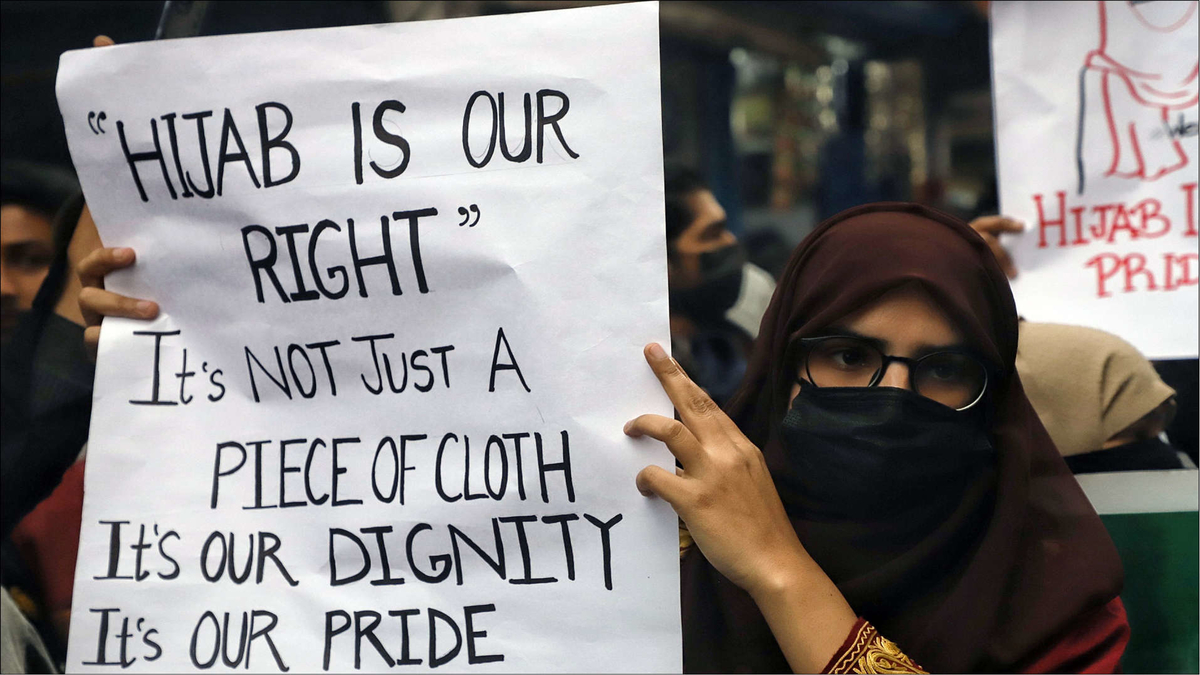The Hijab Controversy
The School in Karnataka ban Hijab because that was disturbing the school uniform and seen as a religious promoting and they are not allowed to enter the schools and colleges in India. Hijab is a head covering for Muslim girls. It can be seen that the schools are more interested in raising the issues related to the religious and not focusing on the academic studies. The Muslim girls protested for there right and response to it the Hindu students counter protested by wearing a saffron shawl. The protest was later raised in such a manner that both the communities came on roads with slogans, harassed girls and stone pelting was also reported. Due to the violence the Chief Minister of Karnataka Basavaraj Bommai decided to shut down the schools and colleges for 3 days. It is mention in the constitution that every citizen has the right to promote the religion peacefully under Article 25. It can be noted that wearing a hijab is not harming and not a threat. On the other hand it can be seen that they are promoting women empowerment and freedom of choice because some women are forced to do so. This can also be noted that people are not concerned about the same rather than they are blind haters for Muslim religion. Not only the Article 25 but Right to Freedom, Article 19 gives the freedom to wear hijab to Muslim girls. Hinduism is best known for the virtue of self-restraint, saiyama and therefore thinks of Rama as a god deserving of universal worship. In Mahabharata, when no one is able to save the dignity of women forced by Duryodhana undressing her, Krishna stands by her. The girl running represents Draupadi from the Mahabharata and the mob disrobing her dress (hijab) terror represents Duryodhana; the government should play the role of Krishna who protects the rights of the Muslim girls. The most important and unnerving element in it is its political signification.
siddhipalkar04@gmail.com

Comments
Post a Comment